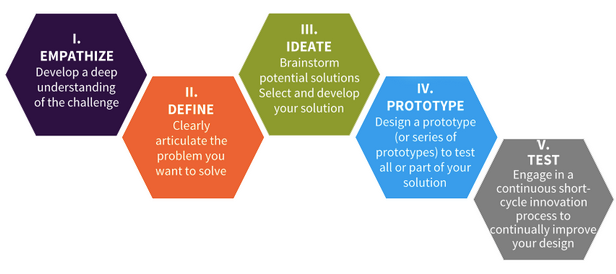Week 2: Overview
Approaches to Design
2. Constructivist Learning Design
A Design Thinking Approach
Empathy: take time to reflect on your learners and their needs / expectations of learning. You may find it useful to view a short video about empathy by Brene Brown (see below). Some versions of Design Thinking develop detailed descriptions of learners called "personas" to guide their designs.
Define: frame the problem and purpose clearly - why are you doing this?
Ideate: take time to consider more than one idea about how to involve your students in learning your subject or topic - brainstorm as many ideas as possible. Finding innovative ideas is a goal.
Prototype: after selecting the main ideas, this step involves "fleshing out" the ideas and providing detailed models or illustrations of how they would work in practice. The purpose is to share the ideas to gather feedback and test the assumptions and beliefs that underly each idea. (You may notice that we used this approach in FLO Design - by asking you to identify and/or develop a prototype learning activity.)
Test: the final step is to test your ideas. Be prepared to collect responses and ideas for what worked and what didn't - return to the design cycle to integrate what you've learned.

You can explore some examples of how each phase occurred in Using Design Thinking in Higher Education or visit an application of design thinking Rethinking Your Course, in a recent project at University of Guadalajara (UdG), led by Justice Institute's Tannis Morgan.
References
Brown, Brene (2013)
Morris, Holly and Greg Warman (2015) Using Design Thinking in Higher Education, EDUCAUSE Review, Jan. 12, 2015. Retrieved from http://er.educause.edu/articles/2015/1/using-design-thinking-in-higher-education
IDEO's Design Thinking Toolkit for Educators, Retrieved from https://www.ideo.com/us/post/design-thinking-for-educators
Thompson, Gary (2010) Personas, FLUID Project wiki https://wiki.fluidproject.org/display/fluid/Fluid+Project+Wiki
Stanford's d.school Virtual Crash Course in Design Thinking. Retrieved from http://dschool.stanford.edu/dgift/